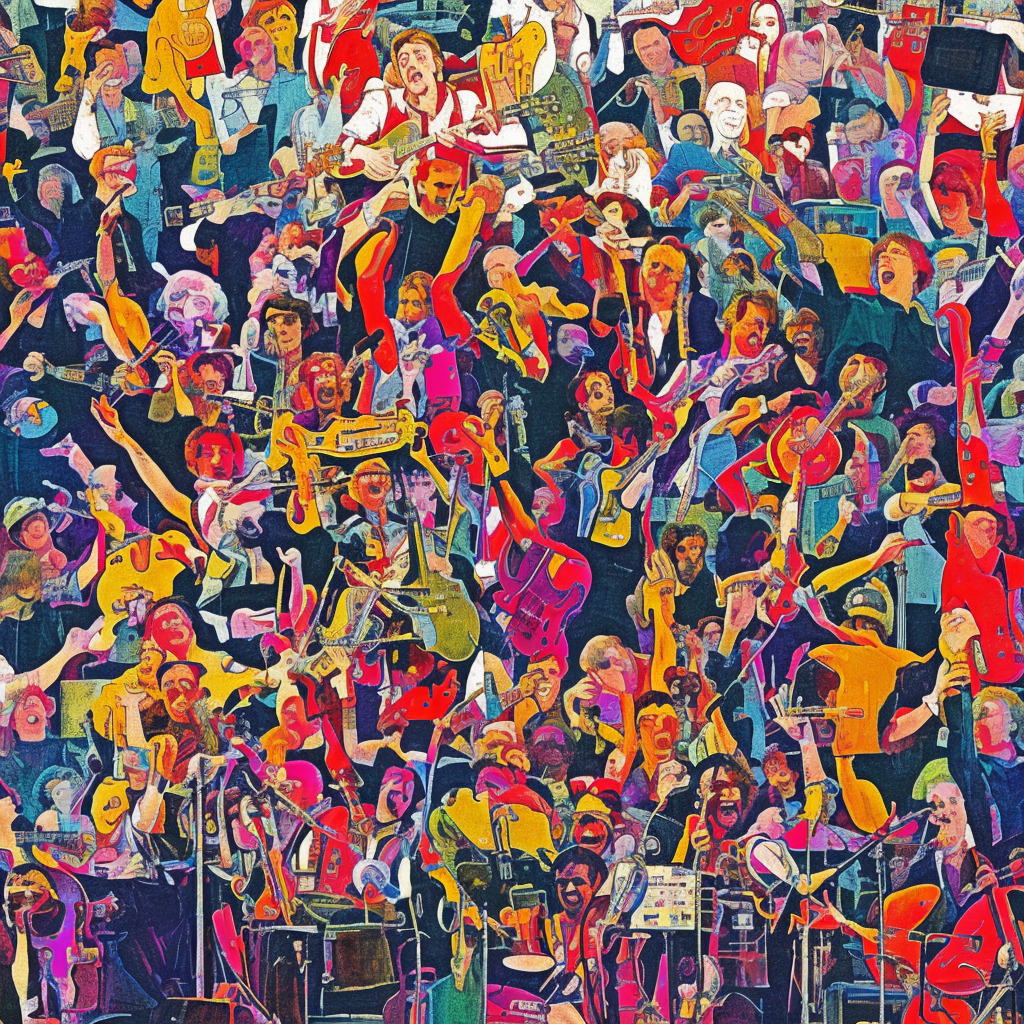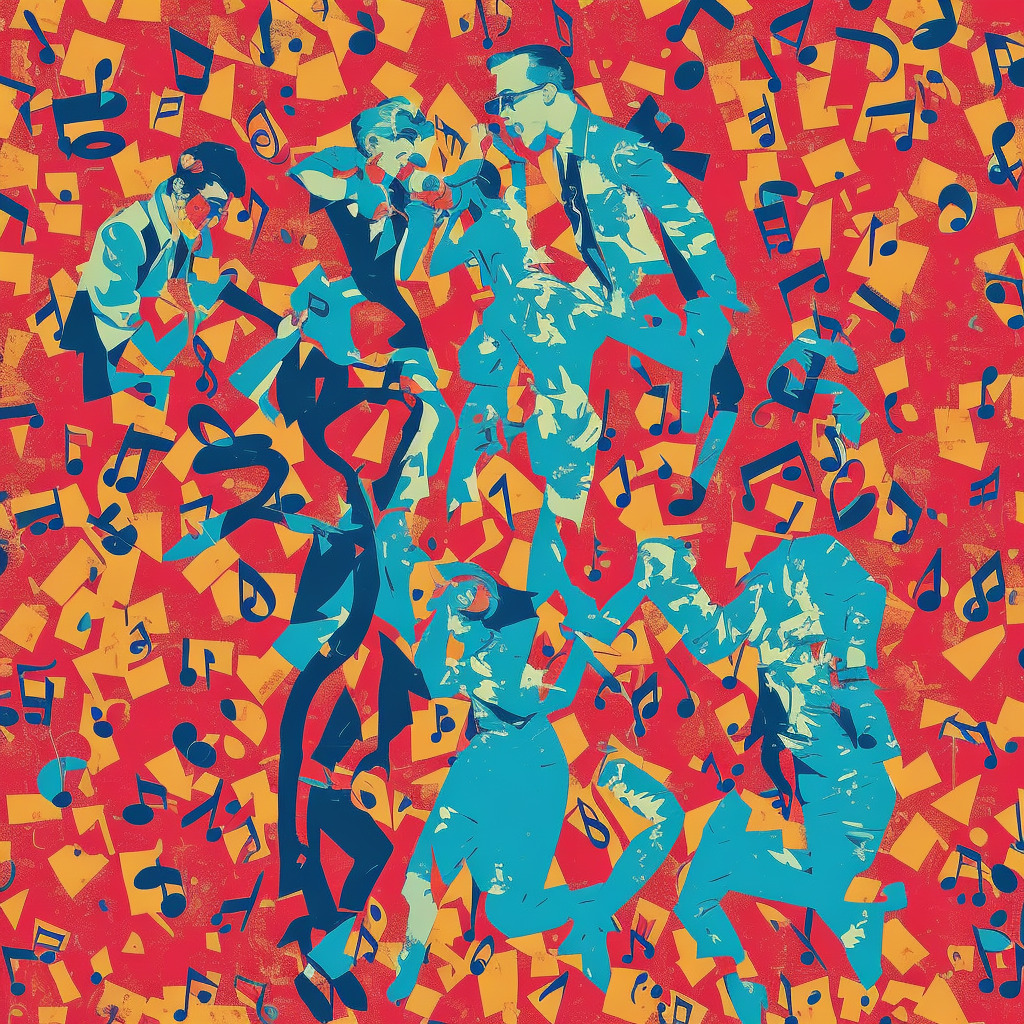🎶 Did you know? #PaulMcCartney played ALL instruments on “Coming Up”! 🤯 A one-man band proving talent has no limits! Jam on, Sir Paul! 🎸🥁🎹🎷 #ComingUp #MusicTrivia #LegendaryArtists Read about it: tinyurl.com/2dkvxubv
Rising to New Heights: McCartney’s Solo Venture
“Ascending Solo Stardom: McCartney’s post-Beatles genius showcased in the iconic chart-topping hit ‘Coming Up’.”

There’s no denying that Sir Paul McCartney is a living legend. As one of the founding members of The Beatles, McCartney helped change the landscape of music through his innovative songwriting, captivating performances, and undeniable stage presence. However, it’s important to also recognize his contributions during his post-Beatles career, especially with the song “Coming Up.”
“Coming Up” was released in 1980 as the lead single from McCartney’s second solo album, “McCartney II.” Not only did McCartney write the song, but he also performed all the instruments and provided lead vocal duties. The song provided a glimpse into the new direction McCartney was taking, combining elements of pop, rock, and electronica. With its catchy melody and infectious rhythm, “Coming Up” quickly became a chart-topping success, even serving as an inspiration for a certain John Lennon to return to the studio after a five-year hiatus.
While McCartney enjoyed tremendous success with The Beatles, venturing into a solo career can be a daunting task for any artist. However, McCartney’s perseverance and dedication to his craft should not be understated. In addition to his solo work, McCartney formed the band Wings in 1971, with his late wife Linda McCartney and guitarist Denny Laine. Wings went on to release numerous successful albums, spawning hits such as “Band on the Run,” “Live and Let Die,” and “Silly Love Songs.”
Throughout his illustrious career, McCartney has been the recipient of various prestigious awards and accolades. As a part of The Beatles, McCartney was inducted into the Rock and Roll Hall of Fame in 1988, and later as a solo artist in 1999. In 2010, he received the Gershwin Prize for Popular Song, awarded by the Library of Congress, as a testament to his contributions to modern music.
Though some may argue that McCartney’s solo work might not have had the same groundbreaking impact as his time with The Beatles, there’s no denying that his musical genius continued to shine through. It’s hard to imagine the music world without McCartney’s contributions, and “Coming Up” stands as evidence of his remarkable ability to continuously evolve as an artist.
In conclusion, while Paul McCartney’s career with The Beatles will forever be cemented in music history, it’s important to acknowledge the incredible body of work he produced post-Beatles, especially with songs like “Coming Up.” His ability to adapt and grow as a musician is a testament to his enduring talent and influence on generations of musicians, and his solo work deserves the recognition it has earned.
Chart Chronicles: A Meteoric Rise
“Coming Up”: Paul McCartney’s meteoric solo ascent to chart-topping success with a timeless tune that captured hearts globally.

“Coming Up” made its entrance into the music world on April 11, 1980, released as a single from Paul McCartney’s second solo album, “McCartney II.” The song quickly garnered attention, and within a month of its release, managed to snag a spot at number 94 on the Billboard Hot 100 chart in May 1980.
As the weeks progressed, the infectious tune climbed the charts with impressive speed. By June 28, 1980, “Coming Up” reached its peak chart position of number one, becoming McCartney’s first solo song to do so after the breakup of The Beatles. In the United Kingdom, the song saw similar success, reaching number two on the UK Singles Chart.
The chart success of “Coming Up” doesn’t stop there. In Canada, it reached the top spot on the RPM Top Singles chart, while in Australia and New Zealand, it managed to reach number six on the Kent Music Report and number nine on the Recorded Music NZ chart, respectively. The song’s global appeal was evident as it ranked highly in various European charts as well.
In the midst of its success, “Coming Up” found itself surrounded by interesting chart trivia. Notably, it was the first McCartney solo single to debut on the Billboard Hot 100 in the top 40, entering at number 35. This would later be surpassed by his 1982 hit “Take It Away,” which debuted at number 22.
Another interesting fact is that it was the live version of “Coming Up,” recorded with Wings at a December 1979 concert in Glasgow, that became popular in the United States. Radio stations preferred the live rendition over the studio version, resulting in the live recording being included as the B-side of the US single release.
Overall, “Coming Up” solidified its place in music history as both a chart-topping success and an unforgettable tune from the legendary Paul McCartney. The song’s rapid rise to fame and its continued influence on the music of today proves that it is a timeless classic.
Decoding the Nostalgia of “Coming Up”
One that will never fade away
I want to help you with your problem
Stick around, I say
Coming up, coming up, yeah
Coming up like a flower
Coming up, I say
You want a friend you can rely on
One who will never fade away
And if you’re searching for an answer
Stick around, I say
Coming up, coming up, yeah
Coming up like a flower
Coming up, I say
Like a flower
Coming Up
In the late ’70s and early ’80s, the world was going through significant changes. The ’60s idealism had waned, giving way to a more apathetic and materialistic outlook. In the midst of this, Paul McCartney’s “Coming Up” emerged as a beacon of hope and positivity, with its infectious melody and upbeat lyrics that spoke of love, friendship, and moving forward.
The lyrics of “Coming Up” have a simple, yet powerful message: find someone who will be there for you and help you grow; a love and friendship that lasts forever. McCartney seems to be saying that life is a journey, and we need people around us who can support us and lift us up in difficult times. The repetition of the phrase “coming up like a flower” is a metaphor for growth and rejuvenation, symbolizing the resilience and beauty of the human spirit in the face of adversity.
These lyrics resonated with many people at the time, as they were searching for stability and hope in a world that seemed to be filled with chaos and uncertainty. The Cold War and the energy crisis were just a few of the issues that loomed large in people’s minds, and McCartney’s song provided an escape from these challenges, giving listeners a sense of reassurance that better times were on the horizon.
“Coming Up” remains a beloved classic in McCartney’s extensive discography, not just because of its catchy tune and energetic performance, but also because of the timeless message it conveys. Its lyrics continue to inspire listeners to seek out meaningful connections and strive for personal growth, making it a song that transcends time and remains relevant even in today’s era.
A Visual Extravaganza: The Music Video for “Coming Up”
A Low-Budget Masterpiece: Paul McCartney’s “Coming Up” music video revolutionizes the industry, inspiring legends like Michael Jackson with its ingenious split-screen and quirky charm.
When it comes to the music video for “Coming Up,” Paul McCartney’s 1980 hit single, there is no shortage of creativity and inventiveness. Directed by Keith MacMillan, who also goes by the pseudonym Keef, the video was produced by MPL Communications and is considered an essential part of the song’s success. Keef’s previous work included collaborations with other musical legends like David Bowie and Elton John, adding to the anticipation for this video.
One of the most remarkable aspects of the “Coming Up” music video is its low-budget charm. Despite the limitations, it went on to become one of the most enduring and memorable music videos of its time. Shot in a minimalist studio setting with a simple white background, the video features McCartney and his wife Linda, both of whom play multiple roles as members of a fictitious band called “The Plastic Macs.” This clever concept showcases McCartney’s versatility as a musician, as he takes on the roles of guitarist, bassist, drummer, keyboardist, and even a horn player.
The video’s innovative use of split-screen editing allows for a seamless performance by the multiple McCartneys and Lindas, creating the illusion of a full band on stage. From the afro-sporting guitarist to the punk-inspired keyboardist, each character is distinctly different and adds a touch of humor to the video. This quirky approach set the “Coming Up” music video apart from its contemporaries and contributed to its enduring appeal.
Not only did the music video enhance the song’s popularity, but it also inspired other musicians to explore the medium further. In fact, it is widely reported that the “Coming Up” video was one of the key influences for Michael Jackson’s decision to invest in creating high-quality music videos for his songs. As a testament to its impact, the “Coming Up” music video has accumulated millions of views on platforms like YouTube, where fans continue to enjoy and appreciate this visual masterpiece.
While there might not be any official alternate versions or fan videos for “Coming Up,” its impact on the world of music videos is undeniable. YouTube tributes and covers of the song have found their own fan base, with talented musicians from around the world putting their unique spin on this classic track. It’s safe to say that “Coming Up” and its groundbreaking music video have left an indelible mark on the history of popular music.
The Man Behind the Melodies: Paul McCartney’s Compositional Prowess
Sir Paul McCartney, the legendary composer of “Coming Up,” boasts an illustrious career that spans six decades. As a member of The Beatles, McCartney collaborated with John Lennon to create some of the most iconic and enduring songs in music history, including “Let It Be,” “Hey Jude,” and “Eleanor Rigby.” McCartney’s post-Beatles career has been equally remarkable, with his band Wings delivering hits such as “Band on the Run” and “Live and Let Die.” Furthermore, McCartney’s solo career has produced gems like “Maybe I’m Amazed” and “My Valentine.” As a versatile musician who dabbles in various genres, Sir Paul McCartney constantly reaffirms his position as one of the most influential composers of all time.
Awards, Accolades, and Appearances
“Paul McCartney’s ‘Coming Up’ shines with chart-topping triumphs, Grammy nods, and timeless media moments, proving its indisputable mark on music history.”

“Coming Up” by Paul McCartney has had quite the remarkable journey since its release in 1980. The song quickly gained traction and soared up the charts, hitting the number one spot on the US Billboard Hot 100 and peaking at number two on the UK Singles Chart. It became McCartney’s first solo number one hit in the United States following the dissolution of Wings, the band he had formed after the breakup of The Beatles. Its infectious, upbeat melody and McCartney’s distinctive vocal style helped cement its place in music history.
The song’s success didn’t just stop at the charts – it garnered a Grammy nomination for Best Male Rock Vocal Performance in 1981. Although McCartney didn’t take home the trophy, the nomination was a testament to the staying power of “Coming Up” as a significant entry in his extensive discography.
“Coming Up” has made its way into various forms of media over the years. Notably, it has been used in the critically acclaimed television series “The Sopranos,” during its fourth season, in the episode titled “For All Debts Public and Private.” Its inclusion in this popular series introduced the song to a whole new generation of viewers, showcasing its timeless appeal.
As for cover versions, “Coming Up” has been reimagined by several artists and bands throughout the years. One of the most notable renditions was recorded by the Scottish rock band Franz Ferdinand for a BBC Radio 2 special in 2007, celebrating McCartney’s 65th birthday. The band’s energetic take on the classic tune added a modern twist while staying true to the original’s spirited essence.
Paul McCartney’s “Coming Up” has undoubtedly made a lasting impact on the music scene since its release over four decades ago. Its chart-topping performance, recognition within the industry, and appearances in various media have solidified its status as a beloved and enduring piece of music history.
Delving Deeper into the Musical Elements
Let’s dive into the fascinating musical structure of “Coming Up.” It’s undeniable that this song showcases some intricate craftsmanship, with the harmonies and melodies working together in perfect synergy. The song is written in the key of F major, and it features a lively, upbeat tempo that sits comfortably around 116 BPM (beats per minute). This tempo helps to give the song a bouncy, energetic feel, making it perfect for dancing or simply tapping one’s foot.
The chord structure of “Coming Up” is relatively simple, yet highly effective. The verse follows a progression of F, Bb, C7, and F, while the chorus implements a slightly different pattern with a Bb, C7, and F progression. The pre-chorus has a descending progression, moving from F to A7, and then to Dm, which adds a touch of complexity to the song. This blend of chords gives the track a catchy, infectious quality that’s hard to resist.
One cannot discuss “Coming Up” without mentioning the fantastic instrumentation. The song features a driving bass line, which is prominent throughout, providing a solid backbone for the entire track. The guitar work is also noteworthy, with a mixture of rhythmic strumming and melodic lead lines that perfectly complement the tune’s overall vibe. Additionally, the synthesizer adds a unique flavor to the mix, with its quirky, futuristic sound design.
The arrangement of “Coming Up” also deserves some attention. The song opens with a brief, yet captivating intro that immediately hooks the listener. As the track progresses, the verse and chorus sections alternate, keeping the listener engaged and invested in the music. The bridge then offers a refreshing change of pace, breaking up the song’s structure before seamlessly transitioning back into the final chorus. This well-thought-out arrangement ensures that “Coming Up” remains captivating from start to finish.
In conclusion, the musical elements of “Coming Up” work together harmoniously, creating a song that is both engaging and memorable. The combination of a lively tempo, catchy chord progressions, and masterful instrumentation results in a track that stands the test of time. This song is a testament to Paul McCartney’s skill and creativity, and it’s no wonder that it remains a beloved classic to this day.







